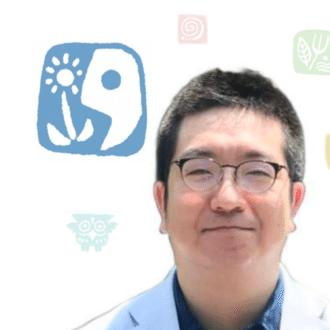
#2 Let's take the time to look art
We cannot hide our admiration for senior doctors and medical advisors who can make a diagnosis at a glance or make accurate judgments one after another. There are many tricks to observation, such as "look into every nook and cranny" and "get a bird's eye view." Still, the only thing I would like to share with you this time is to "spend more time looking. During outpatient consultations and ward rounds, we should consciously spend more time "looking" at patients and their surrounding information.
Important information is not always in a prominent place.
Manet's "The Bar at Folies Bergère" (see figure) is well-known, and many have probably seen it before.

What kind of scene is depicted? The woman in the center is looking toward us. There are many liquor bottles on the table. Is this a bar? If so, is she a bartender?
This may be the first thing you see. We can "take our time" and look at every corner. In the upper right corner is a man in a silk hat talking with a woman, and in the upper left corner, a foot with pointed shoes can be glimpsed, though it is not so obvious. Is this foot standing on a stick because he is a trapeze rider? It seems to be a unique space where people can enjoy the overhead circus in a place where they can drink and socialize. If we were to guess the place and period, the small inconspicuous foot in the upper left corner must be an essential piece of information.
Taking the time to "see" removes filters.
We usually see the world through various "filters" such as our own experiences, cultures we belong to, and interests. As I wrote in the previous issue (No. 3391), our eyes try to skip the process of looking at the world in a short time and with little effort. Therefore, it is essential to note that we often think we have seen everything without taking the time to look. By taking the time to "see," we can remove the filter covering our eyes and see the object from various perspectives.
If you spend a little more time observing than you do now, you will notice more and more things. For example, "I noticed a momentary expression of cloudiness on the patient's face when I brought up the subject of family," "I noticed a reddening of the eyelid conjunctiva," and "The bookmark in the book on the table has not moved since yesterday," and so on. Asking about what you notice may be enough to light up the patient's countenance and improve the relationship. It may also lead to critical diagnostic information or detect early signs of a sudden change. Patients' facial expressions honestly express feelings of pleasure or discomfort, anxiety, fear, anger, etc. They can serve as a marker to prevent you from becoming complacent in your practice.
Learn and sharpen your unique observational skills.
Techniques are not something you understand in your head but acquired through actual physical exercise. Observation skills are no exception. It takes time and effort to become proficient at it, but you can sharpen it as your one and only "medical tool once you receive it. And if we could practice the habit of observation outside of our practice, wouldn't that provide an opportunity for further growth? Artwork can help you do that. Artwork is a great way to practice and develop your eye for value.
Taking the time to "see" will never go to waste. Your ideal style of medical practice will surely await you.
from
いいなと思ったら応援しよう!

